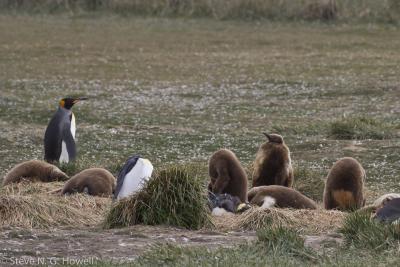Colombia: The Santa Marta Mountains
-
Jan 13-21, 2025
Fabrice Schmitt
-
Jan 2026
Fabrice Schmitt
2026 Tour Price to be Determined
2026 Tour Price to be Determined
Colombia is well known for its diversity of habitats and high level of bird endemism. This is especially true of the isolated mountains of Santa Marta in northeastern Colombia and the Guajira Peninsula on the Caribbean coast, where an impressive number of species can be seen. They include the beautiful and sought-after White-whiskered Spinetail, Santa Marta Blossomcrown, Golden-winged Sparrow, Vermilion Cardinal, Santa Marta Antpitta, White-tipped Quetzal, Chestnut Piculet, and Lance-tailed Manakin. During our searches we’re likely to see some fine mammals such as the handsome Cotton-top Tamarin or the bright red Red-tailed Squirrel, as well as a number of interesting reptiles and showy butterflies.
We think of this nine-day tour, with its comfortable accommodation and marvelous natural surroundings, as a prescription for the late-winter blues, and the medicine is especially easy to take because our starting point, Barranquilla, is just a short two-and-a-half-hour nonstop flight from Miami.
New for 2025, this tour can be taken in conjunction with Colombia: The Chocó.
Day 1: The tour begins at 6 pm this evening in Barranquilla. Night in Barranquilla.
I enjoyed the tour very much and can’t think of anything that should be changed. Fabrice is an excellent guide; very personable and has a great sense of humor! -Karen T.
Day 2: We’ll begin in the wetlands east of Barranquilla. After crossing the wide Magdalena River, we’ll stop at an extensive marsh where migrants from North America are abundant and mix with the more exotic Brown-throated Parakeet, Straight-billed Woodcreeper and Yellow-chinned Spinetail. The noisy Stripe-backed Wren is usually common, the omnipresent Red-crowned Woodpecker peeks from its holes in the palm trees, and the stunning Russet-throated Puffbird is sometimes seen hunting large insects and lizards in the open.
After a few hours of birding in this mix of shrubs and wetlands, we’ll drive to the Isla Salamanca National Park for a short walk in the shade of the mangrove. This rich habitat always attracts interesting species, including Bicolored Conebill, Prothonotary Warbler, and with some luck the stunning Pied Puffbird.
By now it will be hot so we’ll retreat to our cool vehicle and drive toward Santa Marta and then Riohacha, stopping for lunch on the way. In the afternoon, just before arriving in Riohacha, we’ll explore the semi-arid vegetation of the Los Flamencos National Park. The thorny and almost leafless vegetation here hosts an amazing selection of beautiful species. One of the most striking is the White-whiskered Spinetail, but the competition is stiff as other amazing birds occur as well, including Vermilion Cardinal, Orinocan Saltator, Bare-eyed Pigeon, Chestnut Piculet and Trinidad Euphonia. Night in Riohacha.
Day 3: This morning we’ll bird the thornscrub surrounding the village of Camarones, accompanied by our guide from the local Wayuu community. In this the most arid part of the Los Flamencos reserve, we’ll be looking for any species we may still need, perhaps the extremely restricted Tocuyo Sparrow, Slender-billed Tyrannulet (or Inezia), Rufous-vented Chachalaca or Buffy Hummingbird.
In the afternoon we’ll drive toward the splendid Tayrona National Park, arriving early enough to relax in our lodge on the shore of the Caribbean Sea. In the late afternoon, we’ll offer a choice between some more birding or a swim from a beautiful white sand beach. Night near Palomino.
Day 4: Tayrona is both beautiful and relaxing, and it’s a great birding destination. We’ll spend the morning looking for Cocoa Woodcreeeper, Lance-tailed Manakin, Southern Bentbill, White-chinned Sapphire and White-necked Puffbird among others. We even have a chance of finding the extremely rare and endangered Blue-billed Curassow. During our morning’s walk through the forests of the national park, we’ll also be looking for mammals, including Colombian Red Howler and a Tayrona specialty, Cotton-top Tamarin.
After lunch we’ll wend our way towards the village of Minca in the foothills of the Sierra Nevada. On the way, we’ll look especially for the restricted-range Black-backed Antshrike, but also Pale-eyed Pygmy-tyrant, Chestnut-capped Warbler, Panama Flycatcher, and Bicolored Wren. With some luck we might even find a flock of Military Macaw, and the bright red morph of Red-tailed Squirrel would be a brilliant addition to our mammal list. Night above Minca.
Day 5: We’ll bird all morning around the charming little village of Minca. Its location at the intersection of arid habitat, coffee plantation, and the first patches of humid forest helps explain why it holds so many interesting species. Our main targets will include Rosy Thrush-Tanager, Golden-winged Sparrow, Scaled Piculet, Rufous-and-white Wren, Rufous-breasted Wren, Swallow Tanager, Keel-billed Toucan and our first Santa Marta endemic, the Foliage-gleaner!
We’ll have lunch at our countryside hotel, where besides the great food, we’ll enjoy great birds such as Steely-vented Hummingbird, White-vented Plumeleteer, Crimson-backed Tanager or Buff-throated Saltator coming to the feeders as we enjoy an after-lunch cup of Colombian coffee.
After our time at the feeders and on the hotel grounds, we’ll begin our drive toward the lovely Mountain House Lodge, where we’ll spend three nights. The last part of the road is rough and high-clearance four-wheel vehicles are necessary to reach the lodge. Night at Mountain House.
Days 6-7: The Sierra Nevada de Santa Marta is an isolated mountain massif that rises directly from the Caribbean up to about 18,700 feet. Around 30 range-restricted species occur in these mountains, and we have good chance of seeing more than 20 of them! There are also many endemic subspecies, reflecting colonization, then differentiation, from the main Andean chain.
We’ll stay at Mountain House Lodge run by a local family. It’s a magical place where you can have a drink on the terrace with an impressive view of the Caribbean coast while watching Santa Marta Brush-Finches, Black-hooded Tanagers, Crowned Woodnymph, Blue-naped Chlorophonia or Black-chested Jays coming to the feeders and Santa Marta Blossomcrown often visit the flowers.
Away from the lodge we’ll visit higher elevations along the San Lorenzo ridge where we’ll look for Santa Marta Parakeet, Santa Marta Warbler, Santa Marta Bush-tyrant, and Brown-rumped Tapaculo. In the mixed species flocks, we may find a few Black-cheeked Mountain-Tanager, Yellow-crowned Whitestart, Rusty-headed Spinetail, and the handsome Black-capped Tyrannulet. We’ll also pay special attention to the hummingbirds as we have chance of seeing Mountain Velvetbreast, White-tailed Starfrontlet, Santa Marta Woodstar and the endemic subspecies of Tyrian Metaltail.
At lower elevations, we can find the stunning White-tipped Quetzal not far away from Golden-breasted Fruiteater, as well as Santa Marta Tapaculo, White-lored Warbler, Black-hooded Thrush, and the superb Rusty-breasted Antpitta. Nights at Mountain House.
Day 8: Unfortunately, we’ll have to leave our wonderful mountain home and drive back to Barranquilla. On the way, we’ll have a full morning to bird in the Santa Marta foothills, covered by patches of shade-grown coffee and rainforest, looking for any last species we may still be missing. The trees will probably be full of boreal migrants, including the common Tennessee Warbler and Rose-breasted Grosbeak, and perhaps rarer ones such as Golden-winged Warbler or Olive-sided Flycatcher. Among the resident species, we’ll have a great chance to find our last Santa Marta endemic, the Antbird, as well as Yellow-backed Oriole, Orange-billed Nightingale Thrush, and Spectacled Tyrannulet. We’ll arrive in Barranquilla in the late afternoon. Night in Barranquilla.
Day 9: The tour concludes this morning in Barranquilla.
Note: The information presented below has been extracted from our formal General Information for this tour. It covers topics we feel potential registrants may wish to consider before booking space. The complete General Information for this tour will be sent to all tour registrants and of course supplemental information, if needed, is available from the WINGS office.
ENTERING COLOMBIA: US citizens must have a passport, valid for at least six months after your date of departure from Colombia. A the present time, no visa is required for US citizens visiting Colombia for 90 days or less.
Visitors from other countries may need a visa; please contact your nearest Colombian embassy or consulate for further information.
COUNTRY INFORMATION: You can review the U.S. Department of State Country Specific Travel Information at https://travel.state.gov/content/travel/en/international-travel/International-Travel-Country-Information-Pages/Colombia.html
PACE OF TOUR: This is a fairly easy trip, with only a few long drives or walks. Our days will begin between 5:00 and 6:00 am. One one day we will have an earlier start, departing at 4:30 am to reach our birding destination by dawn. Some breakfasts will be taken in the field, others will be eaten at our hotels and lodges. On some days we may take a picnic lunch in the field and on others we will stop at roadside restaurants. Participants should be able to walk at a slow to moderate pace for around four hours at a time; we may walk in the sun on some roads, though most of our trails will be in the shade. Trekking shoes or boots are necessary as the dirt road in the Sierra Nevada is rocky and might be muddy and slippery, and a walking stick may be helpful at times. On some days however, it will be possible to stay behind and bird the lodge grounds; there is time for a siesta on those days.We will typically return to our lodgings around 5:00 pm, with dinner generally starting around 7:00. The leader will call a list of the birds recorded during the day either just before or just after dinner.
HEALTH: The Centers for Disease Control and Prevention (CDC) recommends that all travelers be up to date on routine vaccinations. These include measles-mumps-rubella (MMR) vaccine, diphtheria-tetanus-pertussis vaccine, varicella (chickenpox) vaccine, polio vaccine, and your yearly flu shot.
They further recommend that most travelers have protection against Hepatitis A and Typhoid.
Please contacting your doctor well in advance of your tour’s departure as some medications must be initiated weeks before the period of possible exposure.
The most current information about travelers’ health recommendations can be found on the CDC’s Travel Health website at https://wwwnc.cdc.gov/travel/destinations/traveler/none/colombia
Malaria: A very small part of the tour is conducted in areas where there is a low risk of malaria, the remainder is at altitudes where it does not occur. Please consult your physician.
Dengue Fever and Chikungunya: Dengue Fever and Chikungunya occur in parts of Colombia and seem to be becoming commoner in many parts of South America. There is as yet no inoculation available for either disease, so no protection can be made in advance of travel. They are transmitted by diurnal mosquitoes mostly in heavily populated areas. It is important therefore cover up and use repellent wherever mosquitoes might be encountered.
Yellow Fever: We spend one night in the town of Riohacha considered to be in the Yellow Fever risk area. Otherwise we’ll be in areas considered to be free of the disease. Please consult your physician.
Zika Virus: This virus is expanding into South America including Colombia, and health authorities are still trying to gauge its full impact. Couples who expect/hope to become pregnant should consult their physician.
Water: Bottled water is readily available throughout the areas visited. Drinking water is provided at reserves, in the van when we are on the road, and with meals.
Insects: There are few problems with insects on this tour. Chiggers are present off the roads in Santa Marta, but are not a real problem. Ticks can be a problem some years at Tayrona NP. There are a few mosquitoes in some areas. Bring a good insect repellent for mosquitoes and other insects that we will occasionally encounter. We recommend using insect repellents with a high concentration of DEET.
Altitude: We’ll visit sites up to around 9,000 feet above sea level.
Smoking: Smoking and vaping are prohibited in the vehicles or when the group is gathered for meals, checklists, etc. If you are sharing a room with a nonsmoker, please do not smoke in the room. If you smoke in the field, do so well away and downwind from the group. If any location where the group is gathered has a stricter policy than the WINGS policy, that stricter policy will prevail.
CLIMATE: Temperatures in the Santa Marta area range from lows of around 55 F to highs in the 90s F; the San Lorenzo Ridge in the Santa Marta Mountains can be cool in th eearly morning and a fleece, scarf and gloves are recommended here. The Santa Marta coast and the Guajira Peninsula regions tend to be very hot and dry.
ACCOMMODATION: All of our lodges are comfortable and have electricity, private bathroom, and free wi-fi. Hot water is available only in Barranquilla and at Mountain House Lodge; (it is hot enough in the lowlands the few hotels are offering hot water.) Outside of the cities, many of our accommodations are in very birdy settings, and some exciting birding can be had right from the balconies.
FOOD: We will have our dinners and some of our lunches at restaurants. On one day we may have a picnic lunch of typical make-your-own sandwich fare. We will also have several simple field breakfasts (fruits, bread, jam, peanut butter, ham and cheese, fruit juice and coffee).
Food Allergies / Requirements: We cannot guarantee that all food allergies can be accommodated at every destination. Participants with significant food allergies or special dietary requirements should bring appropriate foods with them for those times when their needs cannot be met. Announced meal times are always approximate depending on how the day unfolds. Participants who need to eat according to a fixed schedule should bring supplemental food. Please contact the WINGS office if you have any questions.
TRANSPORTATION: Travel will mostly be by minibus, with 4WD SUVs used in the Santa Marta Mountains, where the road is rough. The leader will arrange a seating rotation. Participants must be willing to take their turn to ride in any seat in our tour vehicles.
2024 Narrative
In Brief: Is there a better way to escape the boreal winter than by spending a week in the tropics, enjoying the wonderful Caribbean food, staying in fantastic lodges, and seeing around 300 bird species?! Well, that’s what we did on our Santa Marta tour, and believe me… we really enjoyed it!
The Sierra Nevada Cordillera and the Guajira Peninsula are home to an amazing list of restricted-range species, and we had excellent views of (just to name a few…) White-whiskered Spinetail, Chestnut Piculet, Buffy Hummingbird, Orinocan Saltator, White-lored Warbler, Black-backed Antshrike and a long list of “Santa Marta” species, such as Santa Marta Blossomcrown, Antbird, Tapaculo, Antpitta, Foliage-gleaner, Woodstar and Brushfinch. In addition to these very local species, we also enjoyed encounters with the stunning Northern White-fringed Antwren, the lovely Blue-naped Chlorophonia coming to fruit feeders, a pair of the critically-endangered Blue-billed Curassow, the charismatic Russet-throated Puffbird, a beautiful pair of Rusty-breasted Antpittas, Golden-winged Sparrow, and so many more interesting sightings.
Besides birds we also enjoyed an endless list of butterflies and moths, nice reptiles including good views of Green Iguana, and a few mammals such as Colombian Red Howler, and Cotton-top Tamarin.
This tour was also notable for the great accommodations, with amazing hummingbird feeders at Minca and Mountain House Lodge attracting dozens of these magnificent and colorful birds. And last but not least, the meals were really fantastic, and we all enjoyed the tasty Caribbean food, especially the red snapper, shrimp, or seafood with coconut rice!
In Detail: The group met in the evening for an introductory meeting, followed by our first delicious meal of Caribbean cuisine – what better introduction to the tour!
For our first birding day we had an early departure to the Universidad Del Norte grounds for a quick stop to look for our first restricted-range species of the tour, the Chestnut-winged Chachalaca. With the early morning light, we got excellent views of several chachalacas eating unidentified flowers, and also singing Northern Mouse-colored Tyrannulet, a few Saffron Finches, a flock of Glaucous Tanagers, and a few Yellow-crowned Parrots (feral population here) leaving their night roost. On our way out of the city, we stopped briefly along the Magdalena River, one of the most important Colombian rivers, finding four Northern Screamers standing in the floating vegetation, as well as two Great Blue Herons, two Large-billed Terns, a group of Brown-throated Parakeet perched atop a tree in the morning light, and a few Gray Kingbirds while dozens of migrant Northern Turkey Vultures soared overhead.
We then headed towards the agricultural fields and wetlands at Palermo for some early morning birding, enjoying the still “cool” temperatures. Palermo is a wonderful birding area, and we saw more than 50 species of birds in less than two hours: Cocoi Heron, great views of Ringed and Amazonian Kingfishers, a beautiful pair of Russet-throated Puffbirds perched and displaying close in the open, several flocks of noisy Brown-throated Parakeets, family groups of Stripe-backed Wrens, great looks at Straight-billed Woodcreepers and Yellow-chinned Spinetails, the splendid Pied Water-Tyrant, common Red-crowned Woodpeckers, the stunning Spot-breasted Woodpecker and even a pair of Lineated Woodpeckers, a pair of Yellow-bellied Elaenia, three super-cute Turquoise-winged Parrotlets and so many more!! We could have spent all day here, but several other birding spots were waiting for us during our drive towards Riohacha.
On the way to Riohacha, we stopped for lunch by a scenic riverside. It was great to have lunch while watching Carib Grackle, Green Kingfisher, Southern Rough-winged Swallows and a flock of Orange-chinned Parakeets!
Mid-afternoon, we arrived at the village of Camarones where we met Johny, our local guide from the Wayuu community. Birding the dry shrubland along the old access road to the village, we found the beautiful Black-crested (Streak-fronted) Antshrike and a lovely male Northern White-fringed Antwren, the both chestnut and both stunning White-whiskered Spinetail and Chestnut Piculet, a Slender-billed Tyrannulet, Northern Scrub Flycatcher and the sparkling Rufous-tailed Jacamar amongst others. In a nearby field, we spotted no less than 15 Double-striped Thick-knees doing some courtship display, as well as a pair of Buff-necked Ibis and two Aplomado Falcons. We ended the day with a delicious dinner in Riohacha.
We started our day with an early breakfast at Johny’s mom’s house, where she had prepared fruit, eggs, rosquillas (a fried bread) and of course Colombian coffee and hot chocolate for us, and it was a great way to start the day! We spent the next morning birding the dry scrubland and forest found on the Guajira Peninsula, knowing that we would find several of the restricted-range species in these particular habitats. The first of them was the Rufous-vented Chachalaca, and we found birds perched atop a small bush and heard a few more calling. We also had excellent views at Trinidad Euphonia, Tropical Gnatcatcher, Yellow Oriole, Brown-crested Flycatcher, the recently-split Caribbean Hornero, White-tipped Tyrannulet and Black-faced Grassquit. We even found a pair of the uncommon Black-backed Antshrike! We wrapped up our morning at a local garden where the owner feeds birds, attracting the mega-beautiful Vermillion Cardinal, a few Orinocan Saltators, Pileated Finch, Scaled Doves and a Buffy Hummingbird!
We then drove to La Jorara Lodge, a stunning place just by the Caribbean Sea. We arrived for lunch and enjoyed a wonderful grilled Red Snapper, and then a swim in the Caribbean Sea and/or a nap in one of the lodge hammocks! When the temperature dropped in the afternoon, we did some birding in a patch of dry forest where we found Thick-billed Euphonia, Crimson-backed Tanager, the splendid Lance-tailed Manakin, and two Red-legged Honeycreepers. We also had a nice flock of Nearctic migrants including Blackpoll, Black-and-white, Tennessee and Prothonotary Warblers, and Red-eyed Vireo, and had fantastic looks at a pair of White-necked Puffbirds perched in the open atop a tall tree. We couldn’t have ended the day better than with a delicious dinner and a peaceful night in our charming lodge.
After an early but tasty breakfast at La Jorara, we drove to the entrance of Tayrona National Park for a morning birding there with our local guide, Angel. The tall secondary growth forest attracts lots of interesting species – the most common, at least by voice, being Buff-breasted Wren. We saw a very long list of birds that morning including very good views of a pair of One-colored Becards, a pair of Rufous-and-white Wrens, and also Pale-bellied Hermit, Collared Aracari, Golden-fronted Greenlet, Streaked Flycatcher, Brown-capped Tyrannulet, White-chinned Sapphire, Cocoa Woodcreeper, White-bearded Manakin, Orange-crowned Oriole and Black-crowned Antshrike. Besides birds we also had excellent looks at two groups of Cotton-top Tamarins and a family group of Colombian Red Howlers.
But the most incredible find of the morning the pair of the critically endangered Blue-billed Curassow walking quietly on the forest floor, seen well by the whole group! Angel also knew where to find a roosting Great Potoo, and we had an excellent view just before we exited the park.
After a great lunch along the way, we stopped in Minca for an ice cream in front of hummingbird feeders attracting numerous White-necked Jacobins, Steely-vented Hummingbirds, White-vented Plumeleteers and Rufous-tailed Hummingbirds. And then it was time to head to our lovely lodge in the foothills above Minca, enjoying the super view of Santa Marta and the Caribbean coast as well as the Blue-naped Chlorophonias, Black-headed and Bay-headed (Bay-and-green) Tanagers, sparkling Crowned Woodnymphs, and dull Pale-breasted Thrushes, all coming to the garden.
The next day we spent all morning birding the upper part of Minca, mostly in shade-grown coffee plantation and patches of dry forest. In just a few hours we found so many of the Sierra Nevada endemics: a family of Santa-Marta Antbirds giving us an amazing show and offering fantastic views, a Santa-Marta Blossomcrown feeding on the flowers of Marmalade-bush together with a pair of Santa Marta Woodstars, a Sierra Nevada Brushfinch coming to a feeder in someone’s property, a pair of Santa Marta Tapaculos coming close to the tape, a few White-lored Warblers and plenty of Santa Marta Brushfinches! Besides these endemics, we also had Yellow-backed Orioles, flocks of Red-billed Parrots, a Gartered Trogon, two lovely Plumbeous Kites, and a pair of Masked Tityras. We even had cracking views on two Rusty-breasted Antpittas seen just a few meters from the road!
After lunch, we began the drive towards El Dorado Lodge and after arrival spent the rest of the afternoon in the lodge garden, finding a lovely pair of Masked Trogons, a beautiful Golden-olive Woodpecker, a Sickle-winged Guan and numerous Band-tailed Guans coming to the feeders. We ended the day with a drink watching the beautiful sunset on the Caribbean coast. What an amazing beginning and wonderful introduction to the next birding days we would have in the Sierra Nevada!
We had two full days to explore the different elevations of the cordillera, finding most of the endemic species living in this isolated range. We spent our first morning birding the “road” between the lodge and the San Lorenzo biological station. We started the day with decent views of two Brown-rumped Tapaculos attracted by the tape of their song, and then started our walk along the road. We found a few flocks, including Blackburnian and Black-and-white Warblers, Blue-capped Tanager, Brown-capped Vireo, Slate-throated Redstart, Montane Woodcreeper and Streak-capped Spinetail. We also saw a sublime Yellow-breasted Chat-Tyrant (the Tyrant-Flycatchers family is usually under-rated, so I really enjoy using ‘sublime’ for one of them). Our lovely morning concluded with a nice show by two Santa Marta Antpittas coming to a feeding station. What a treat to see this very elusive (and obviously endemic) species in such excellent conditions!
For our second morning, we explored the upper part of the road, driving by night from the lodge to the San Lorenzo ridge. On the way we stopped twice for nocturnal birds but only heard a distant Santa Marta Screech-Owl. We then had a field breakfast enjoying the spectacular view of this wonderful cordillera, with a pair of Yellow-crowned Redstart singing around us! In the patch of forest and chusquea bamboo, we quickly found a family group of the beautiful Santa Marta Warbler, several Black-cheeked Mountain Tanagers and Mountain Elaenias, together with Streak-capped and Rusty-headed Spinetails. We also enjoyed close views of a pair of the recently-split Hermit Wood-Wren, and a prolonged scope view on a migrant Merlin. But the stars of the morning could well be the charismatic pair of Scaly-naped Parrots visiting a possible nesting cavity in a dead tree right by the road! Then, just as we were leaving to return to the lodge, we found an uncommon Santa-Marta Bush-Tyrant calling and foraging close to us — what a morning! During a short afternoon walk, we had another look at the splendid White-tipped Quetzal, and also Lined Quail-Dove, Montane Foliage-gleaner and Santa Marta Woodstar. And then it was time to say good night after a long and fantastic day.
After two full days in the Sierra Nevada, it was time to leave this amazing place and drive all the way back to Barranquilla. On the way down, we stopped at the lovely Mountain House Lodge for a breakfast on their terrace, enjoying the stunning activity at their feeders: Keel-billed Toucan, Golden-olive Woodpecker, Yellow-backed Oriole, Tennessee Warbler, the electric-blue Swallow Tanager and Rusty Flowerpiercer, all seen while enjoying the coffee produced by the owners of the lodge themselves! Continuing towards Minca, we made a few stops in the shade-grown coffee plantations, finding Santa Marta Foliage-gleaner, Scaled Piculet, Golden-winged Sparrow, a Streak-headed Woodcreeper, and our last restricted-range species: a Coppery Emerald feeding on the roadside and offering great views! We also found numerous North American migrants including American Redstart, Baltimore Oriole, and Broad-winged Hawk, and even added two species to the overall tour list: Yellow-throated Vireo and Acadian Flycatcher.
After an excellent morning’s birding, we headed to Hotel Minca for a nice lunch watching the busy hummingbird feeders, and soon after set off for Isla Salamanca. Delayed by a flat tire, we had little time at Isla Salamanca NP, but it was enough to find a lovely Pied Puffbird, a pair of Bicolored Conebills, a few Spotted Sandpipers, as well as Pied Water-Tyrant and a Bare-throated Tiger-Heron.
And with that, our fantastic tour concluded the same way it began, with a fabulous dinner of tasty Caribbean cuisine!
- Fabrice Schmitt
Fabrice had a nice manner with the group, is sensitive to the different backgrounds and experiences, and enlivens the trip with his good sense of humor.
- George R. on Colombia: The Santa Marta Mountains
I enjoyed the tour very much and can’t think of anything that should be changed. Fabrice is an excellent guide; very personable and has a great sense of humor!
- Karen T. on Colombia: The Santa Marta Mountains
Note that single accommodation may not be available at every lodge if we have a high number of singles on the tour.
Maximum group size is eight participants with one leader.
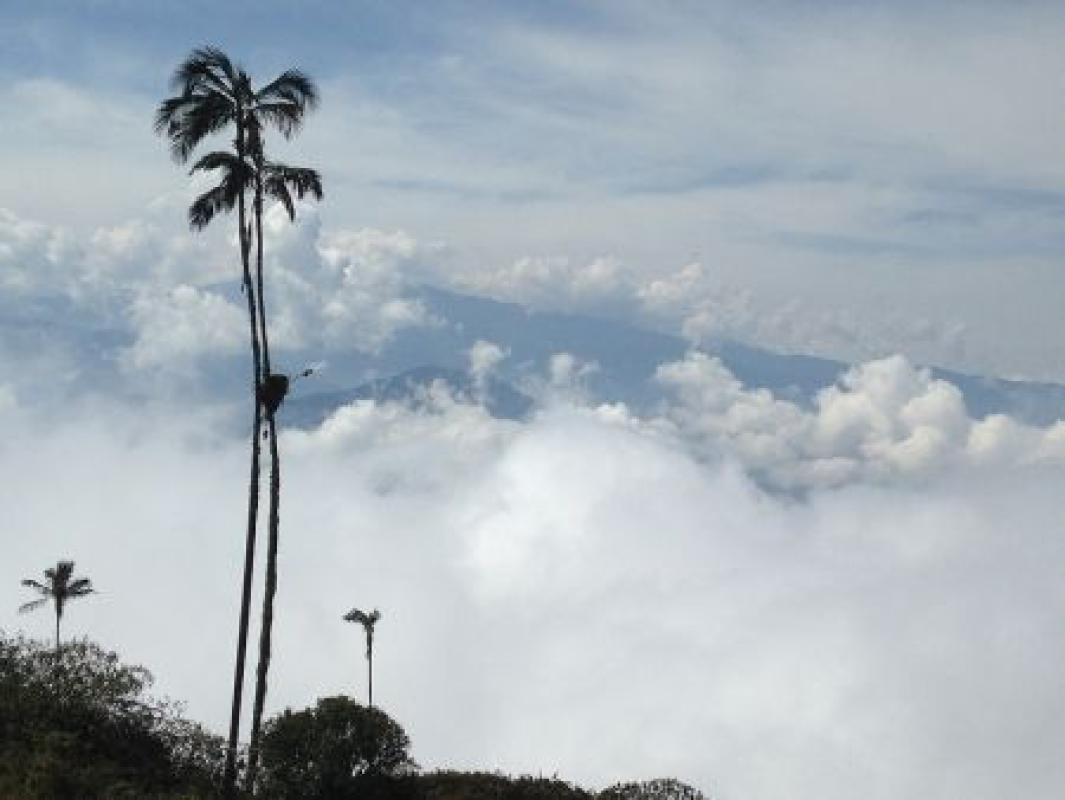
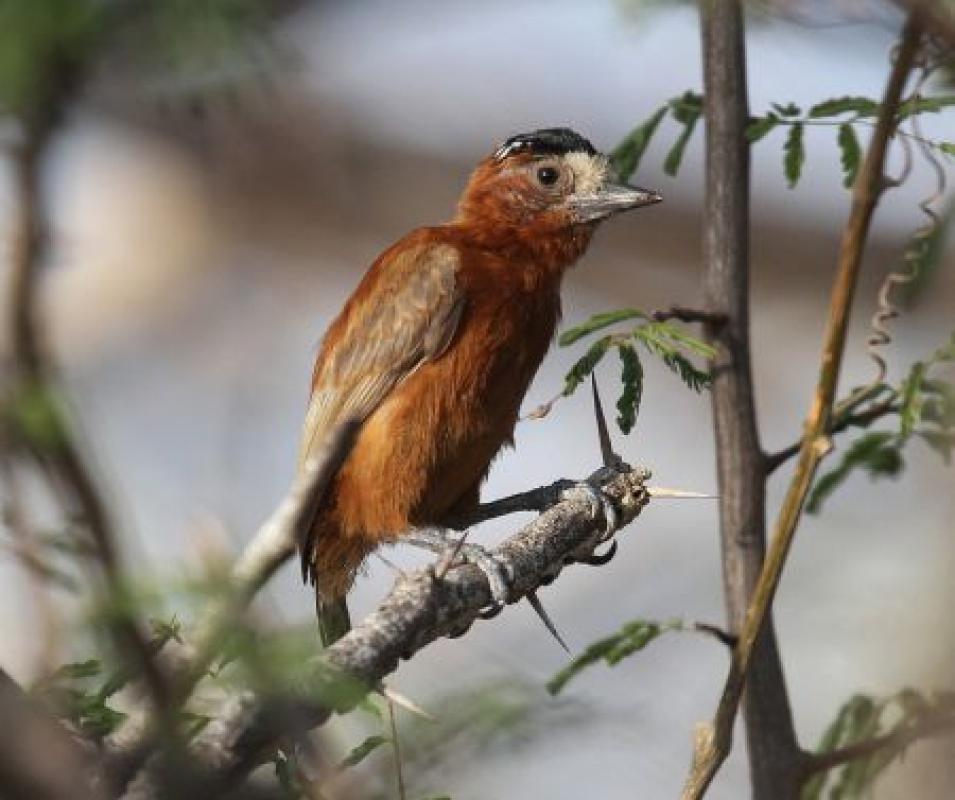
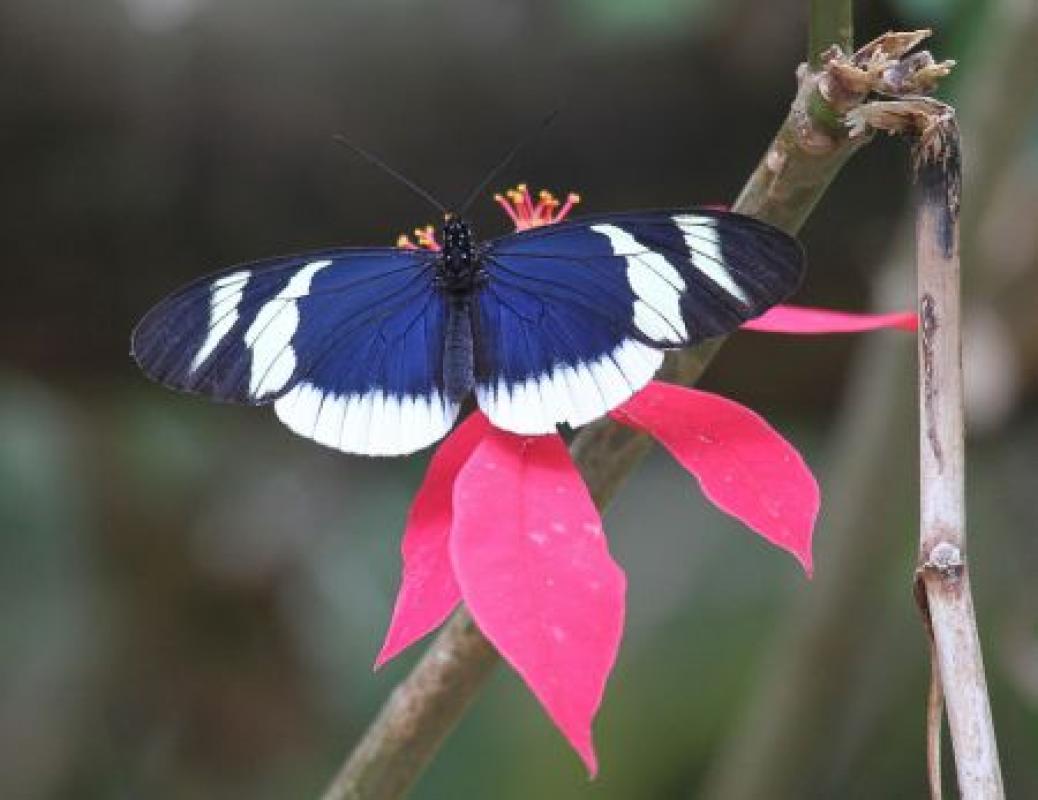
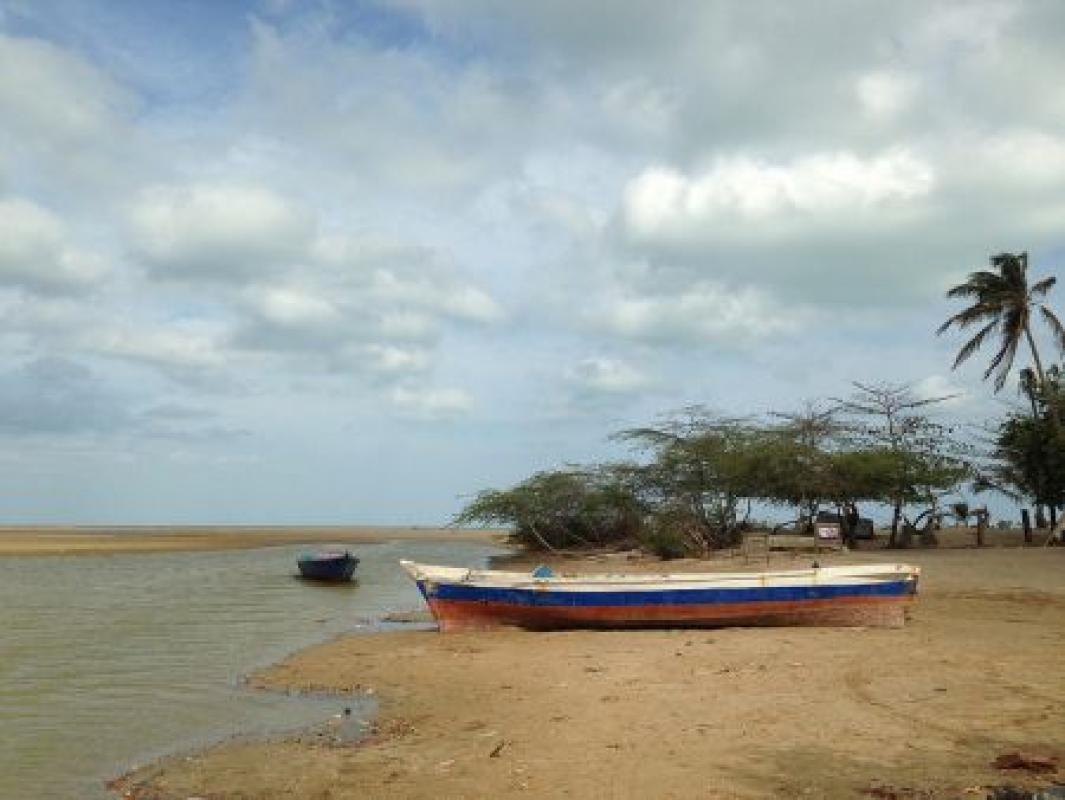
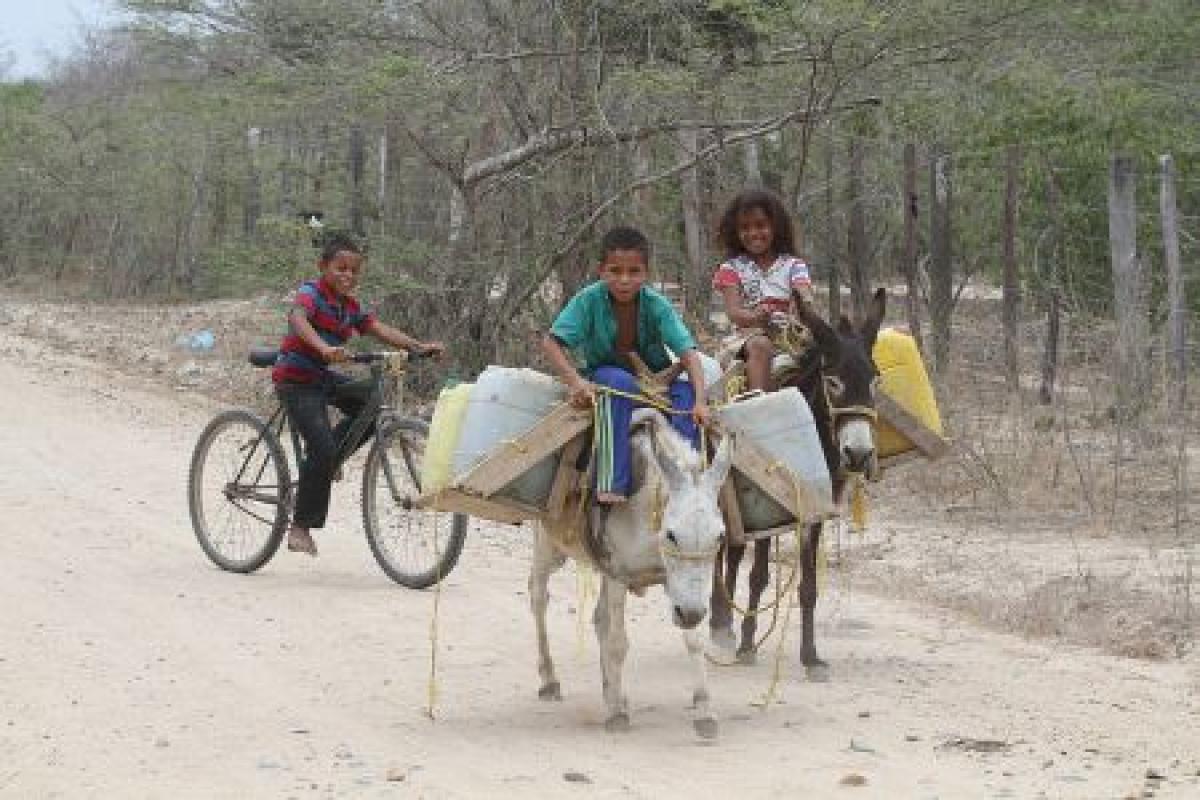
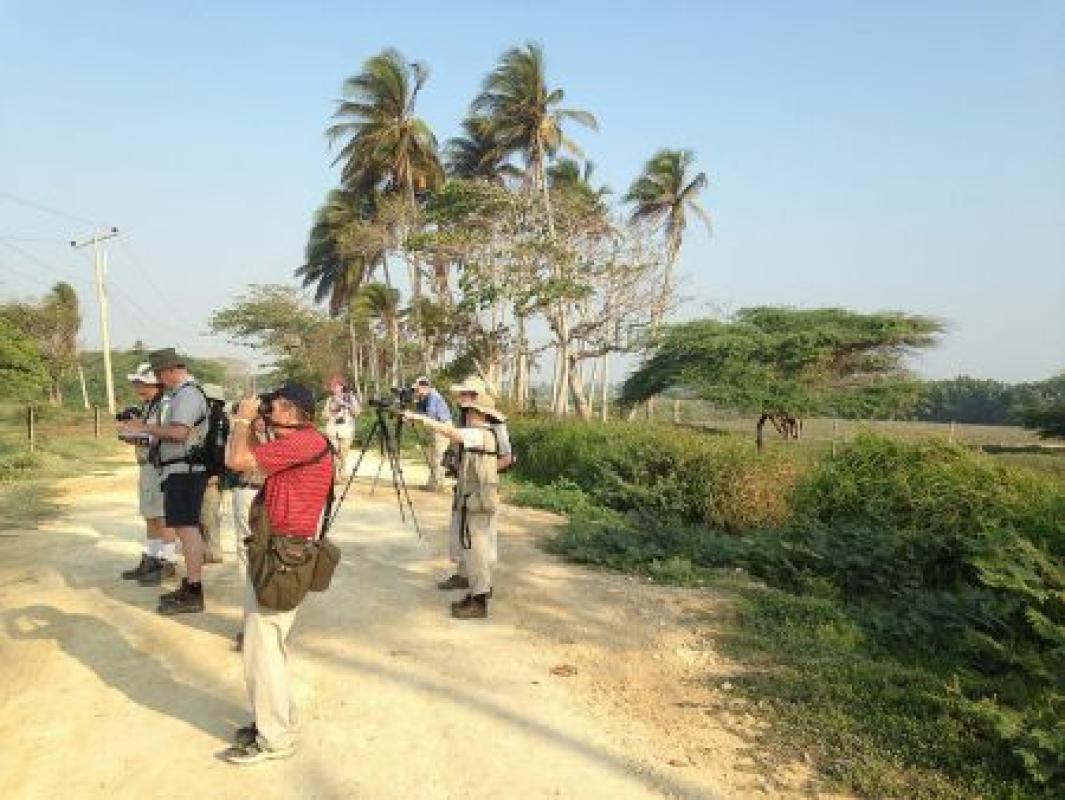
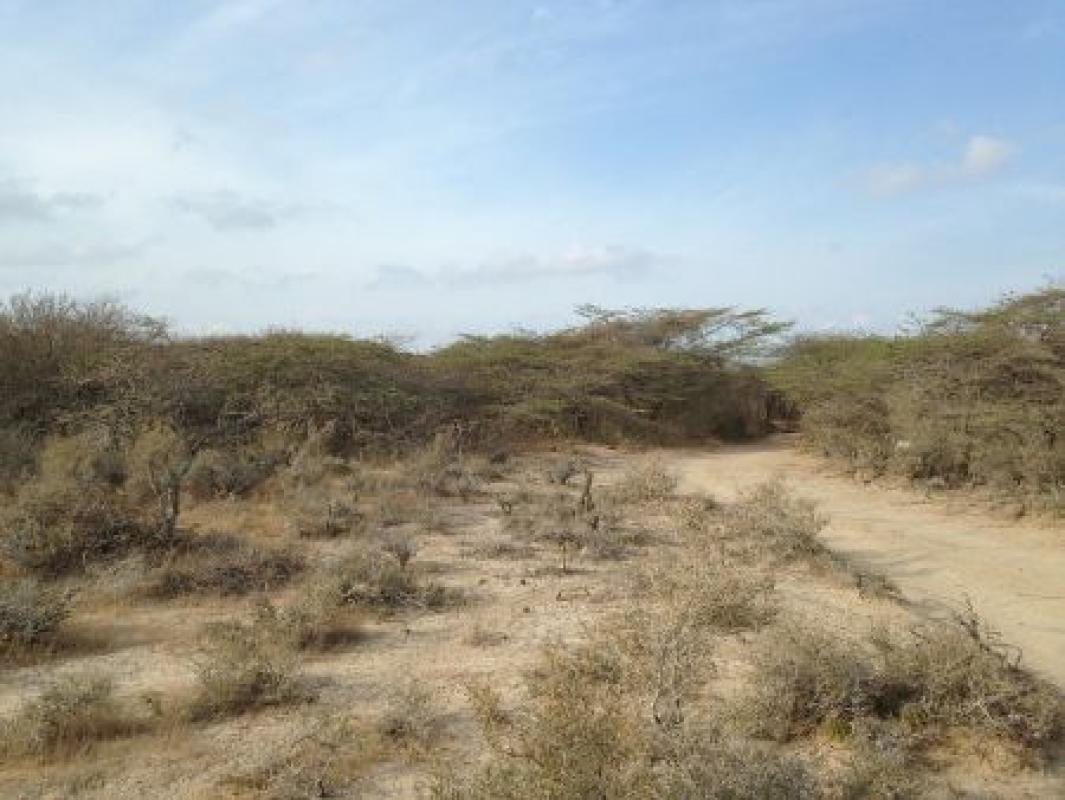
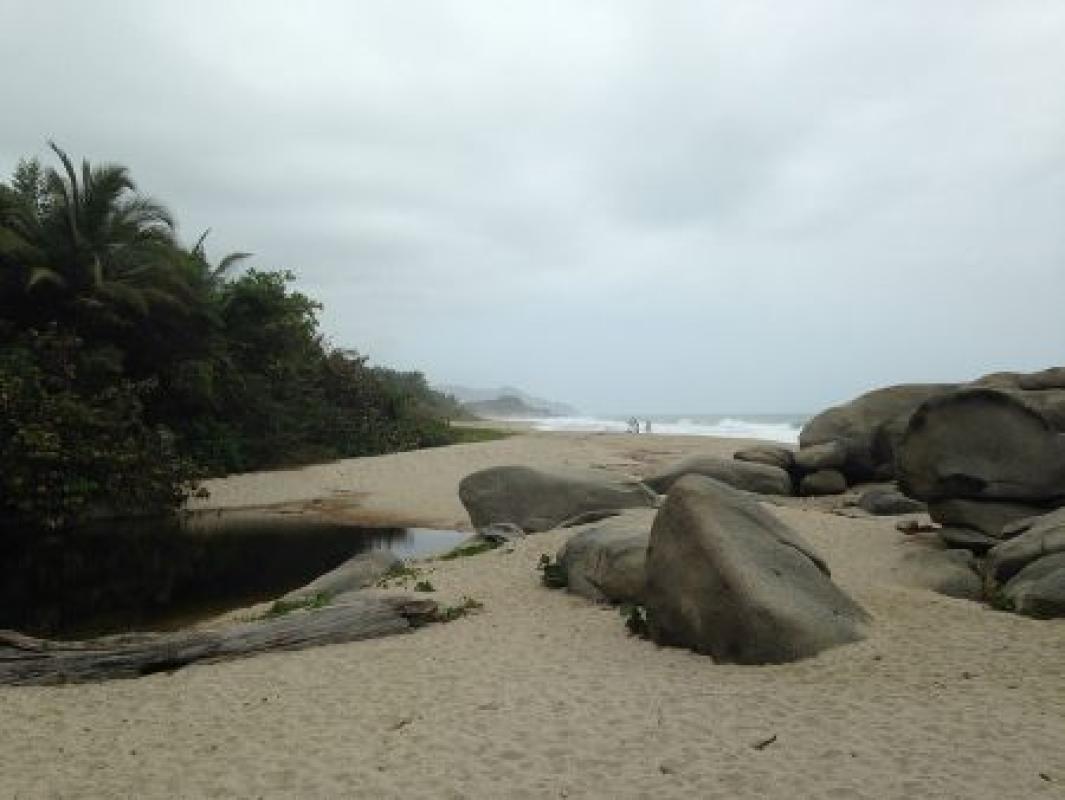
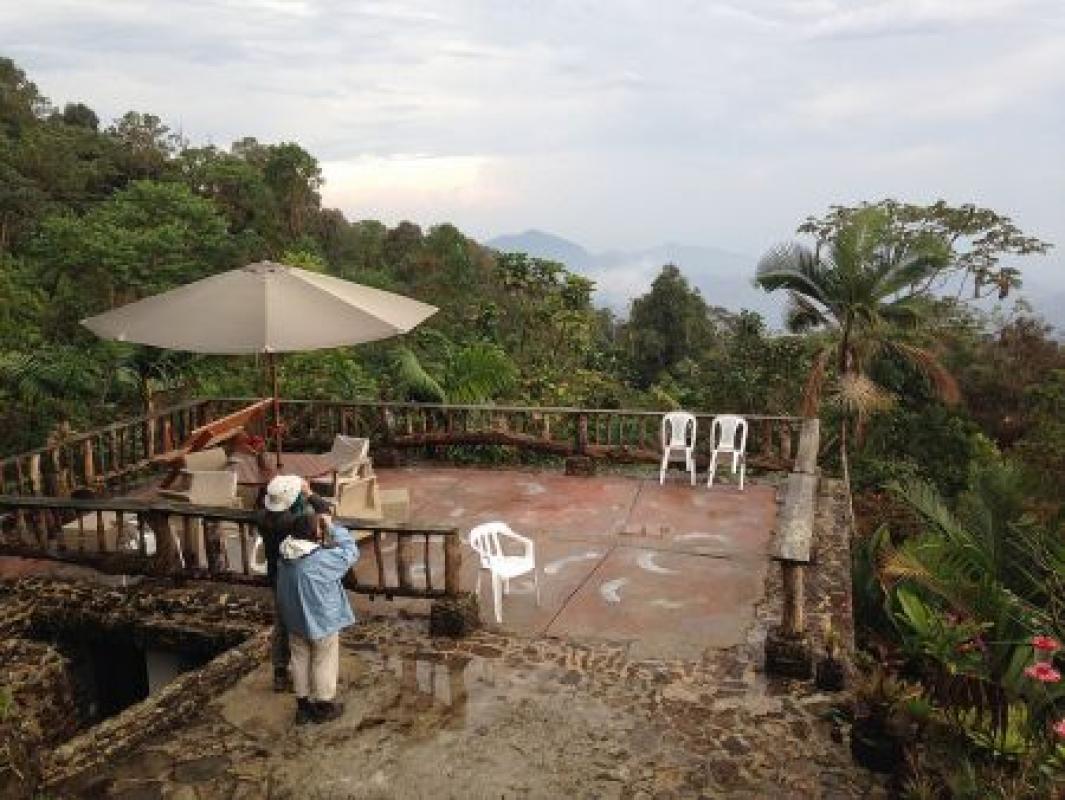
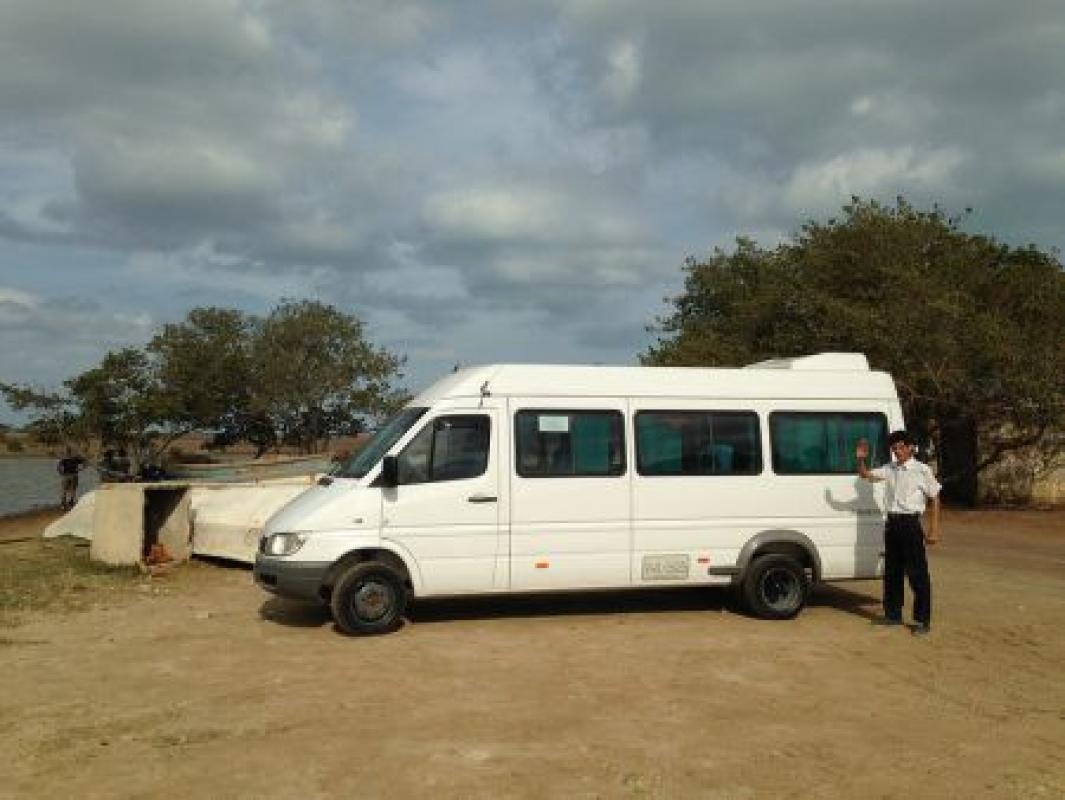
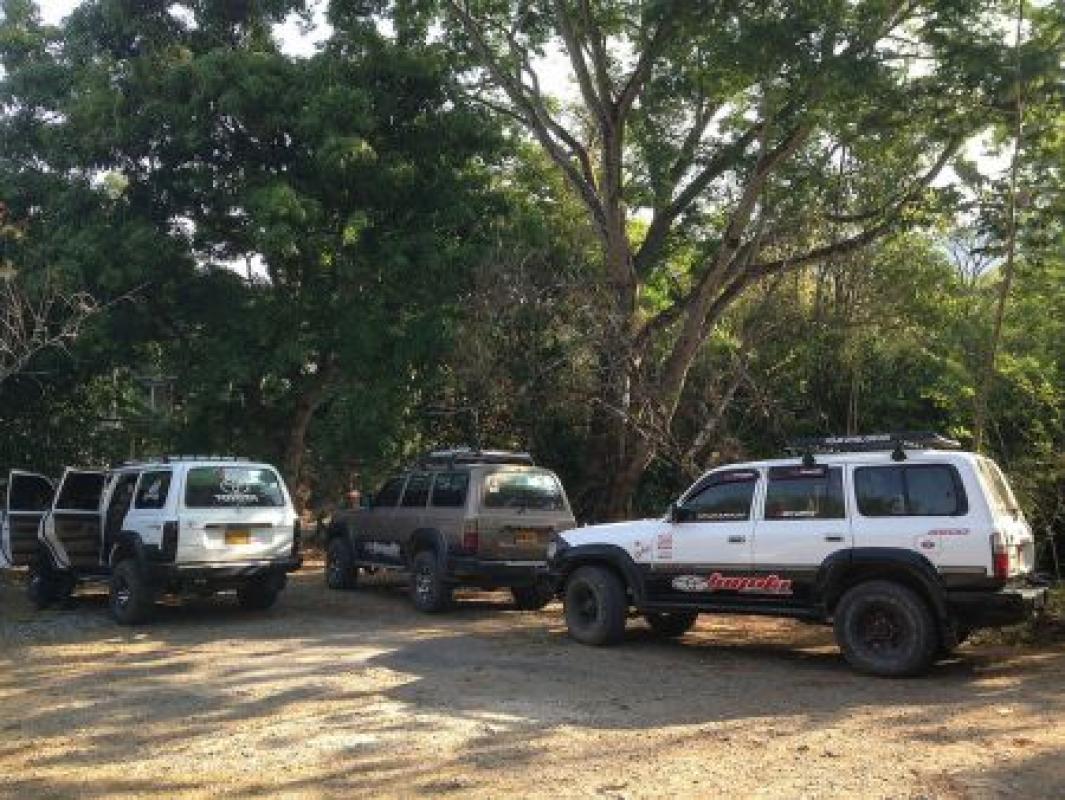
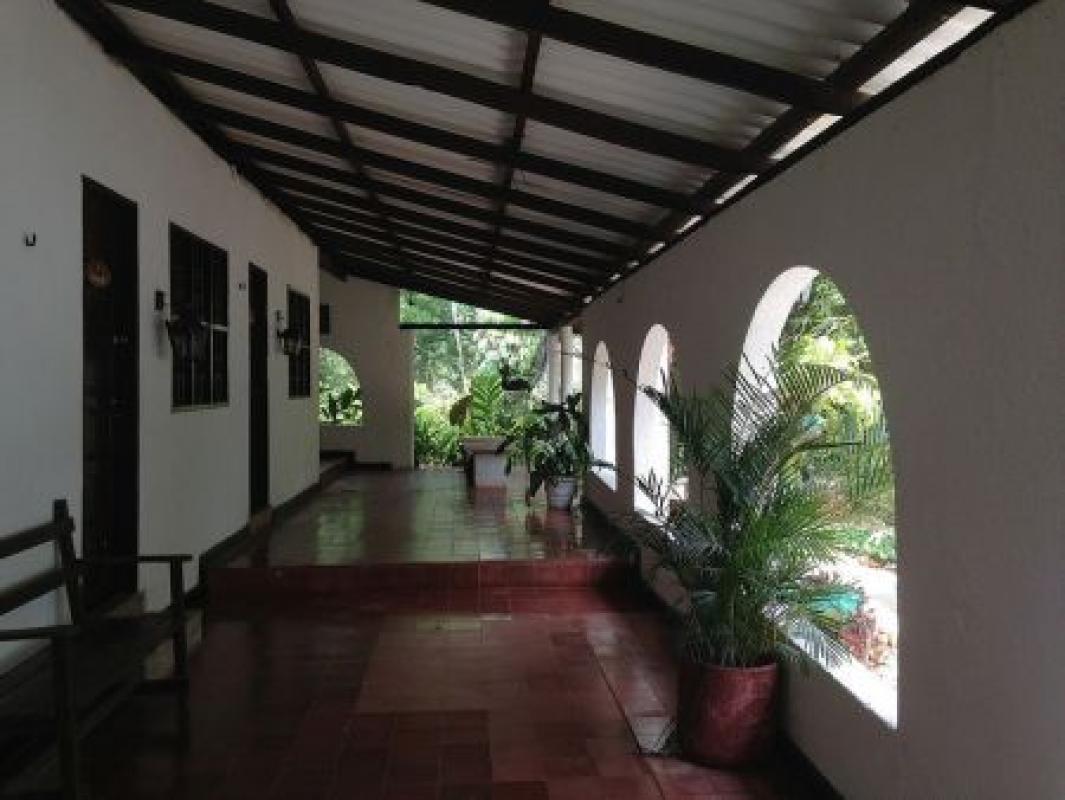
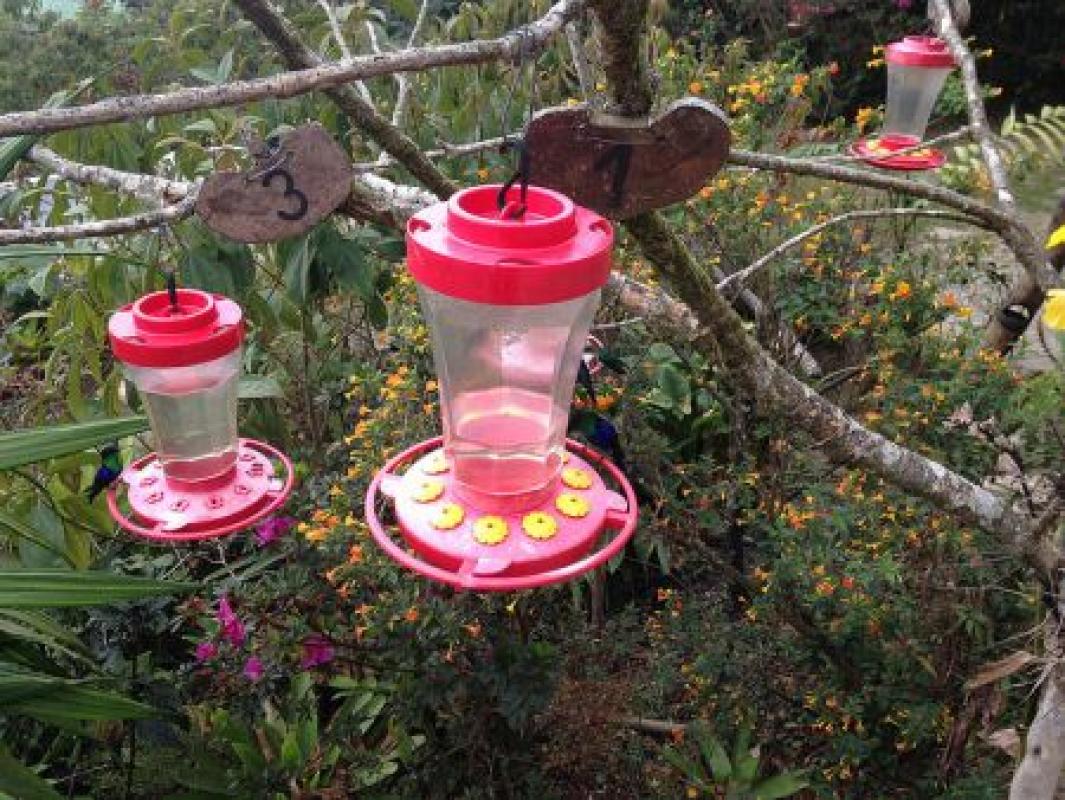
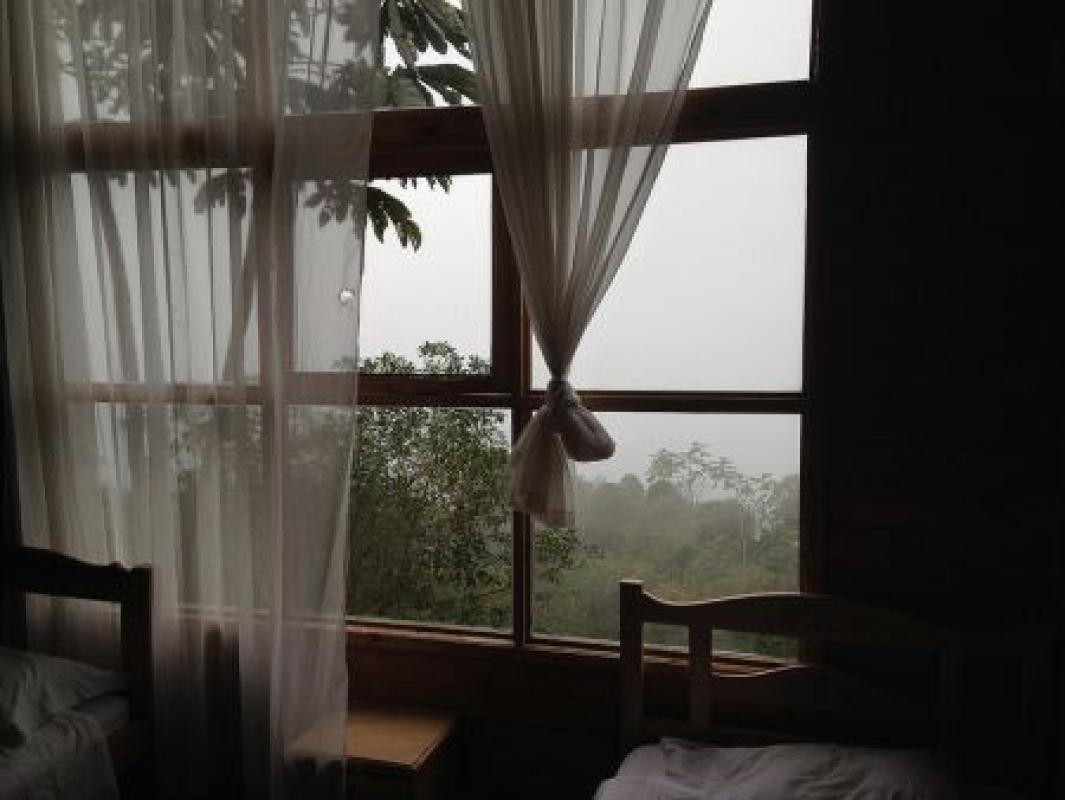
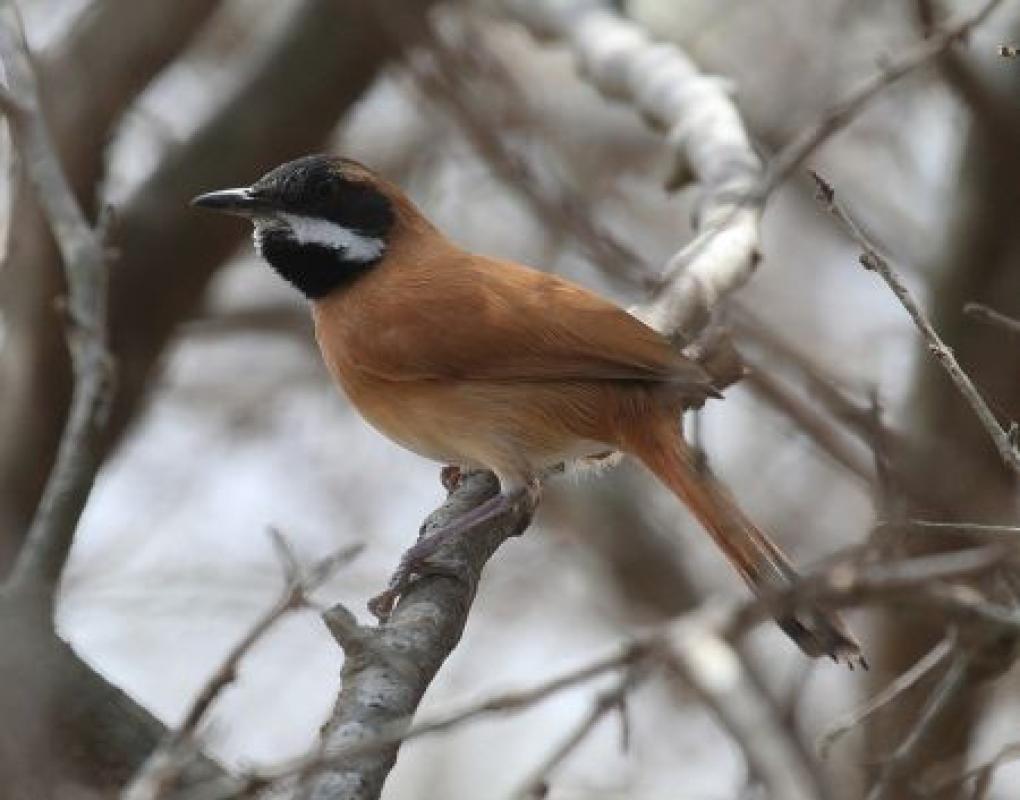
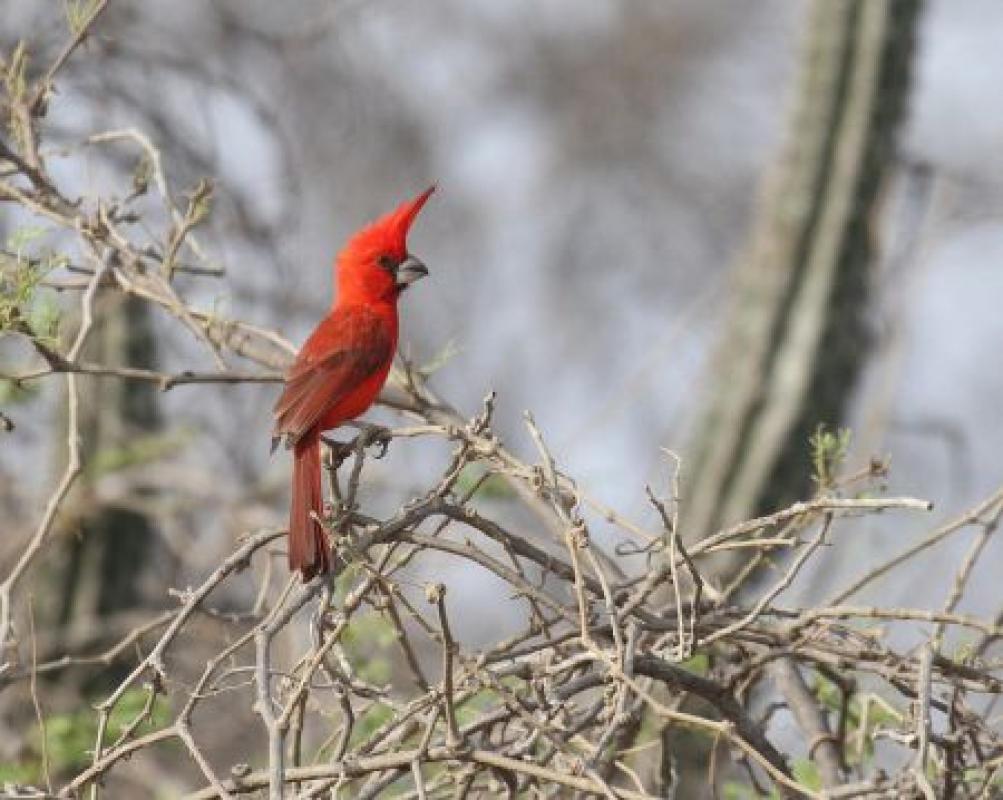
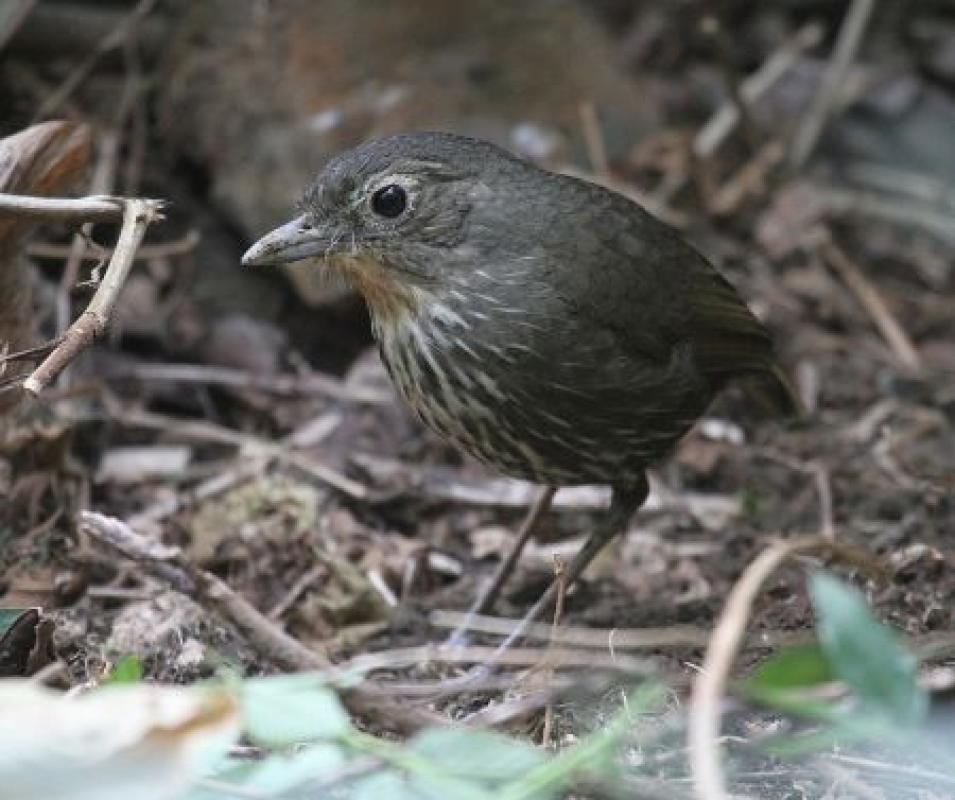
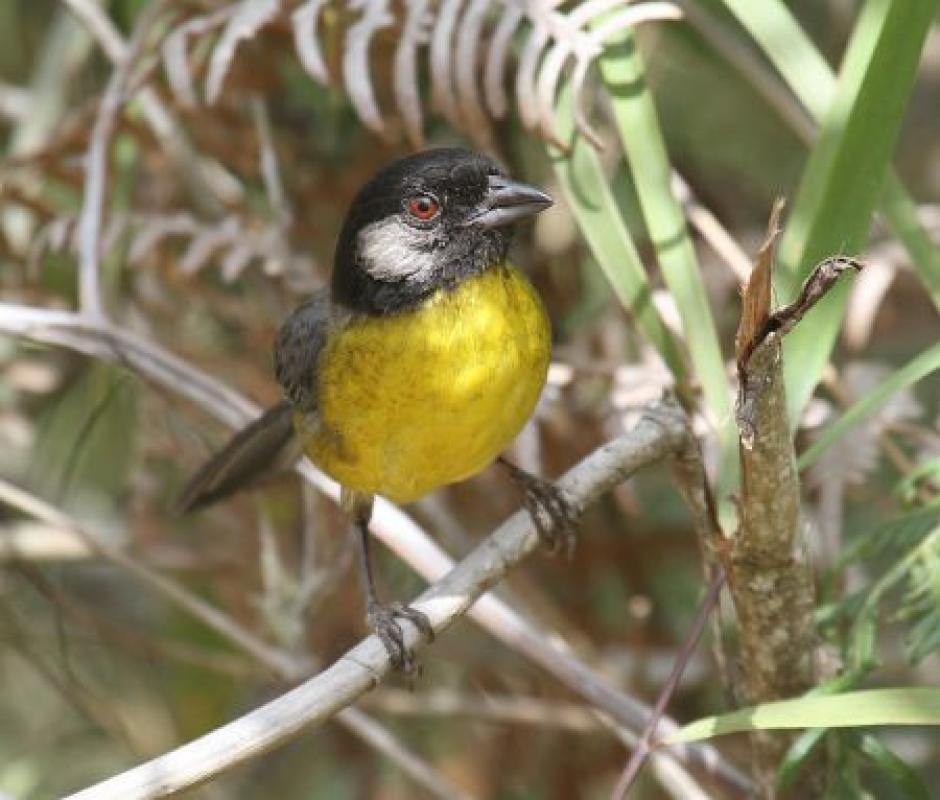
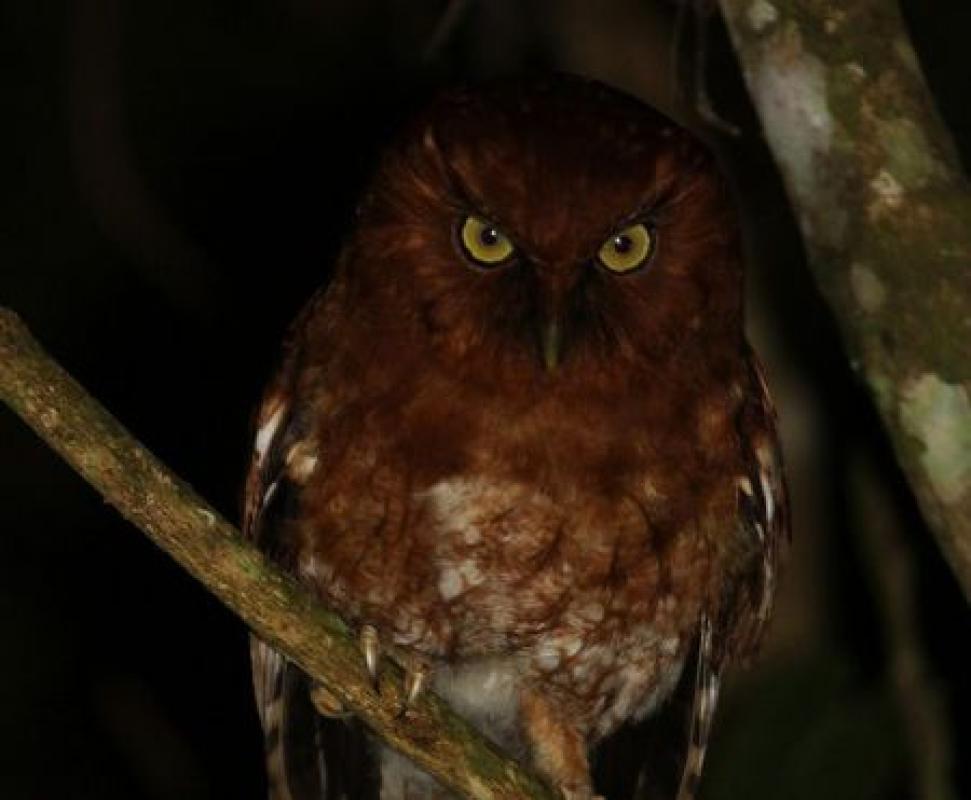
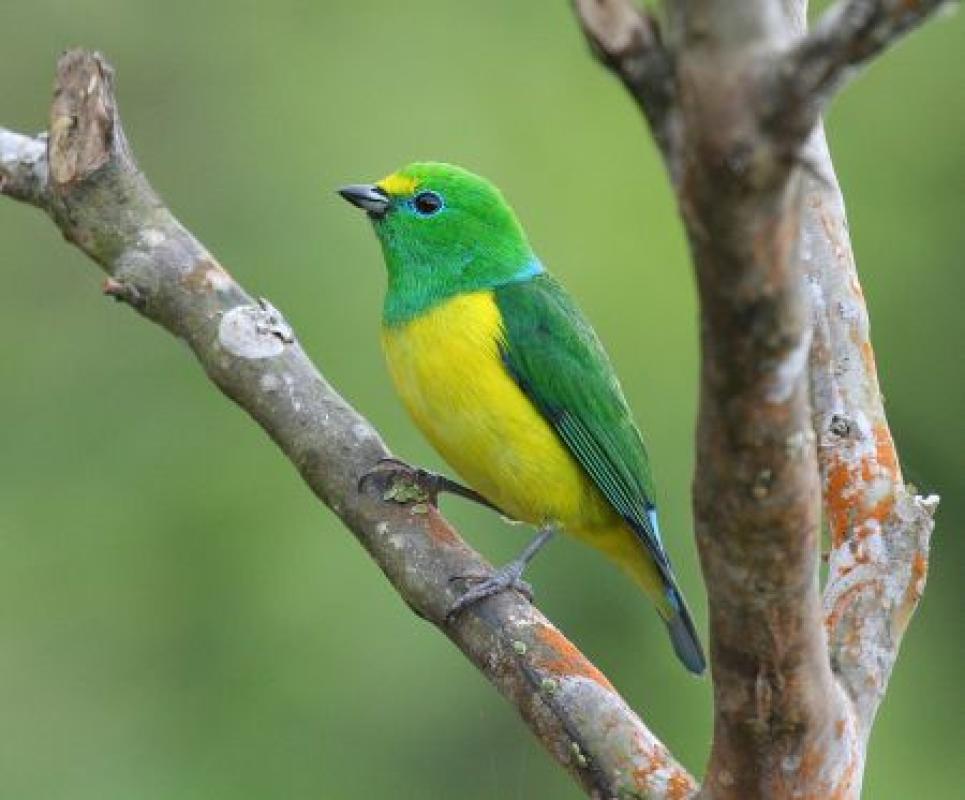
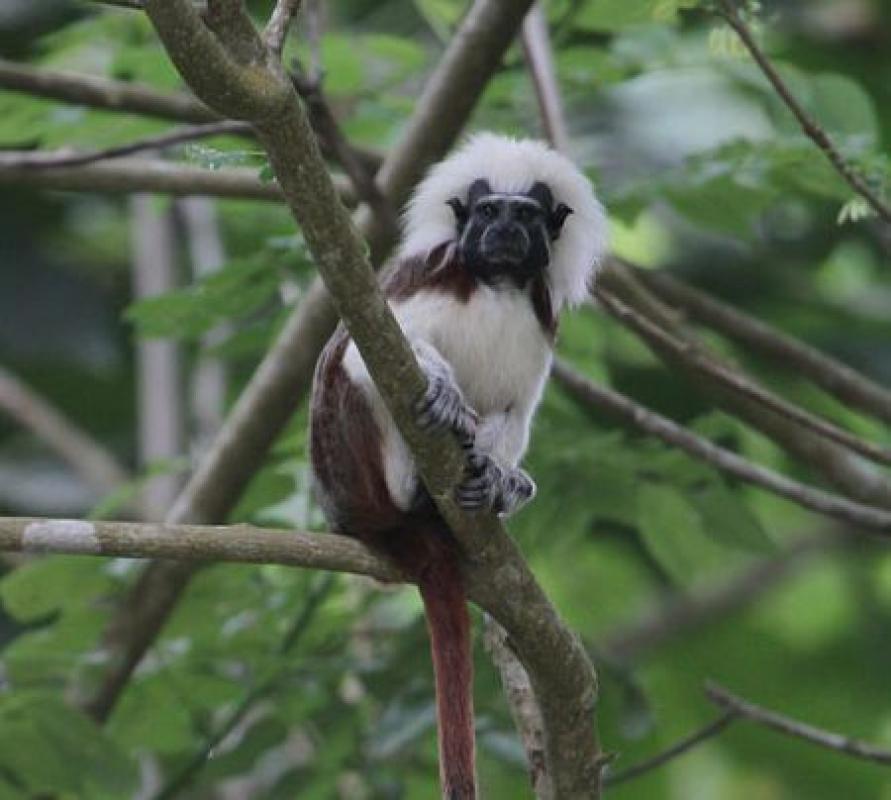
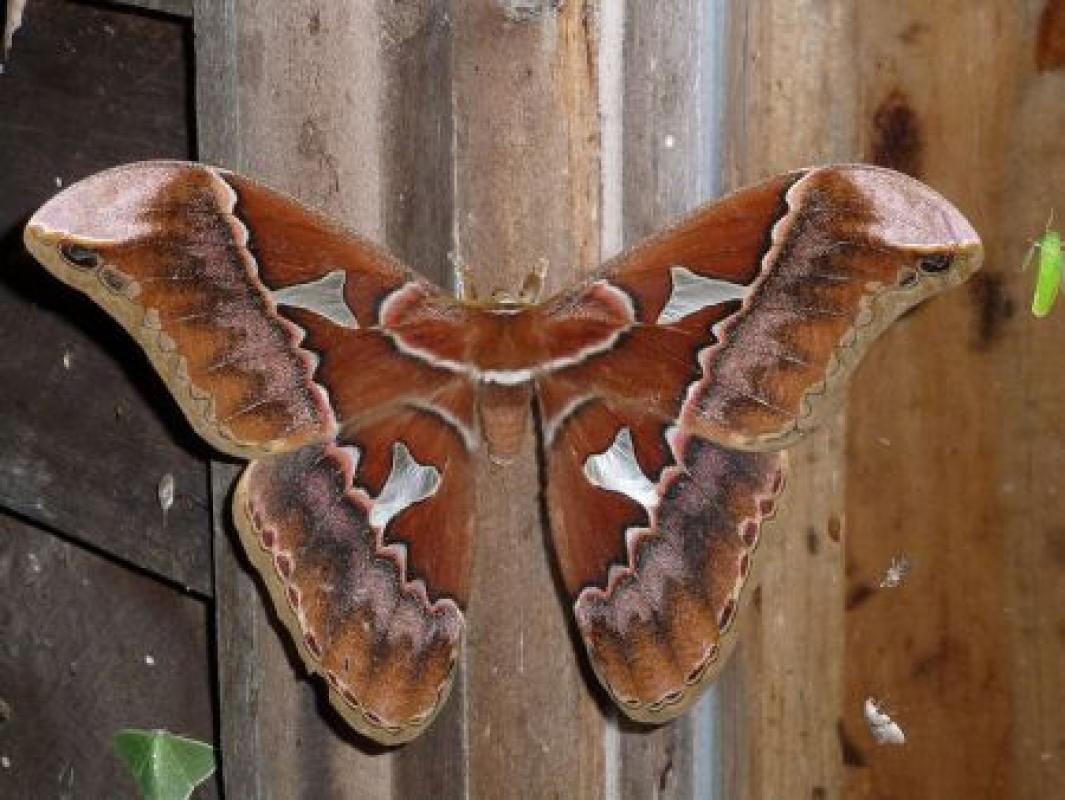
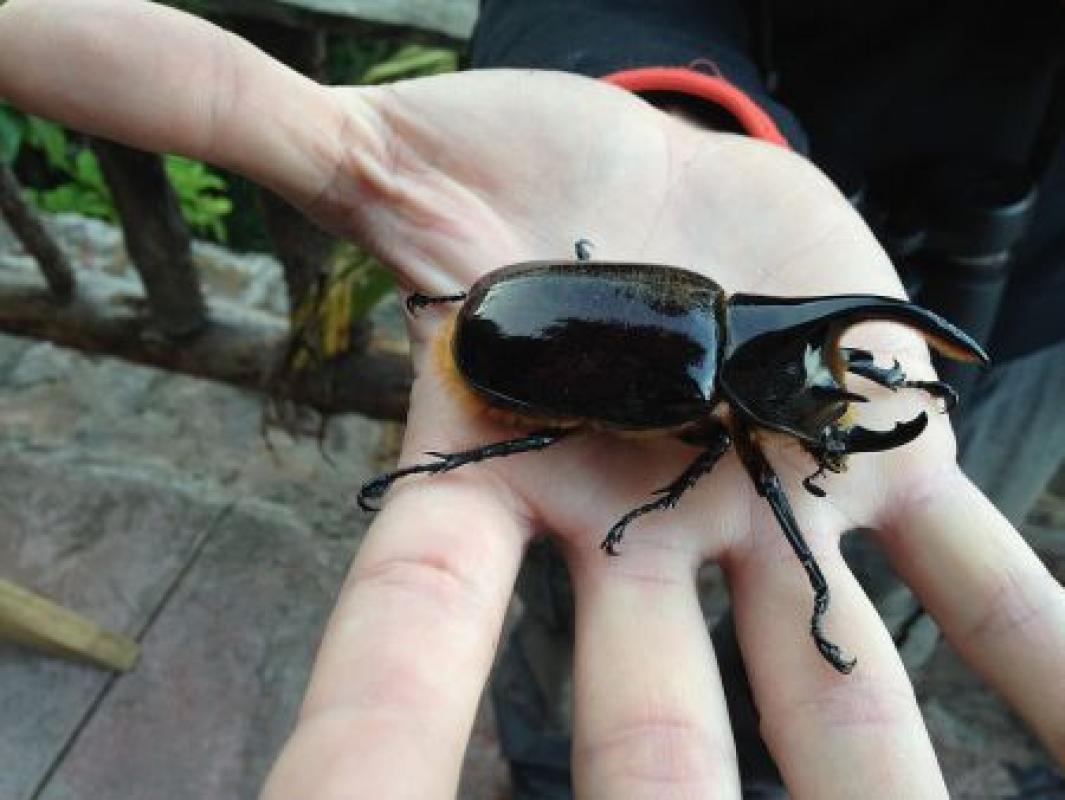
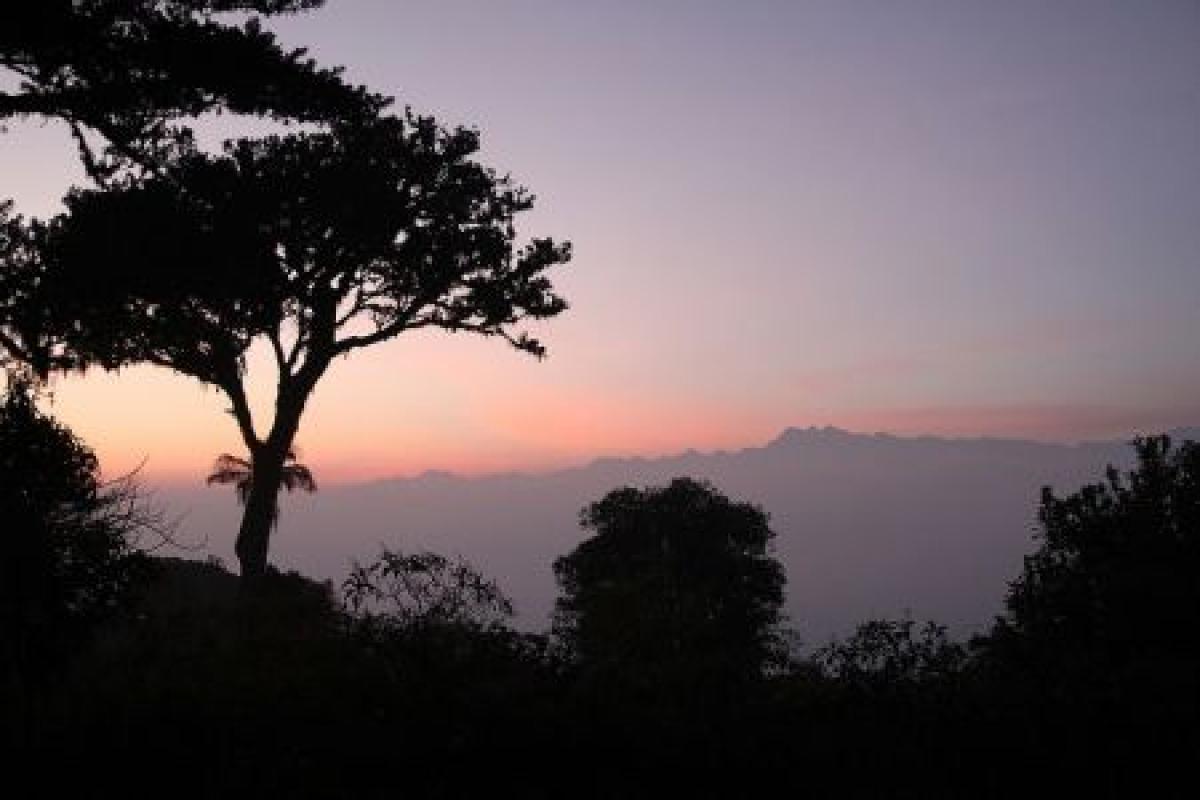
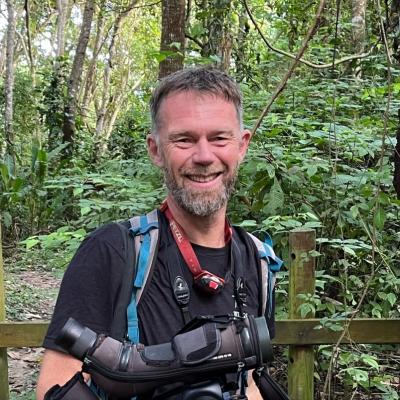
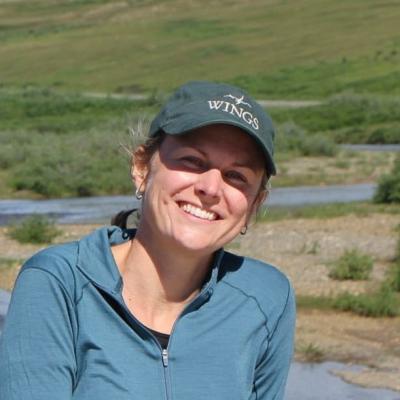
-400.jpg)
